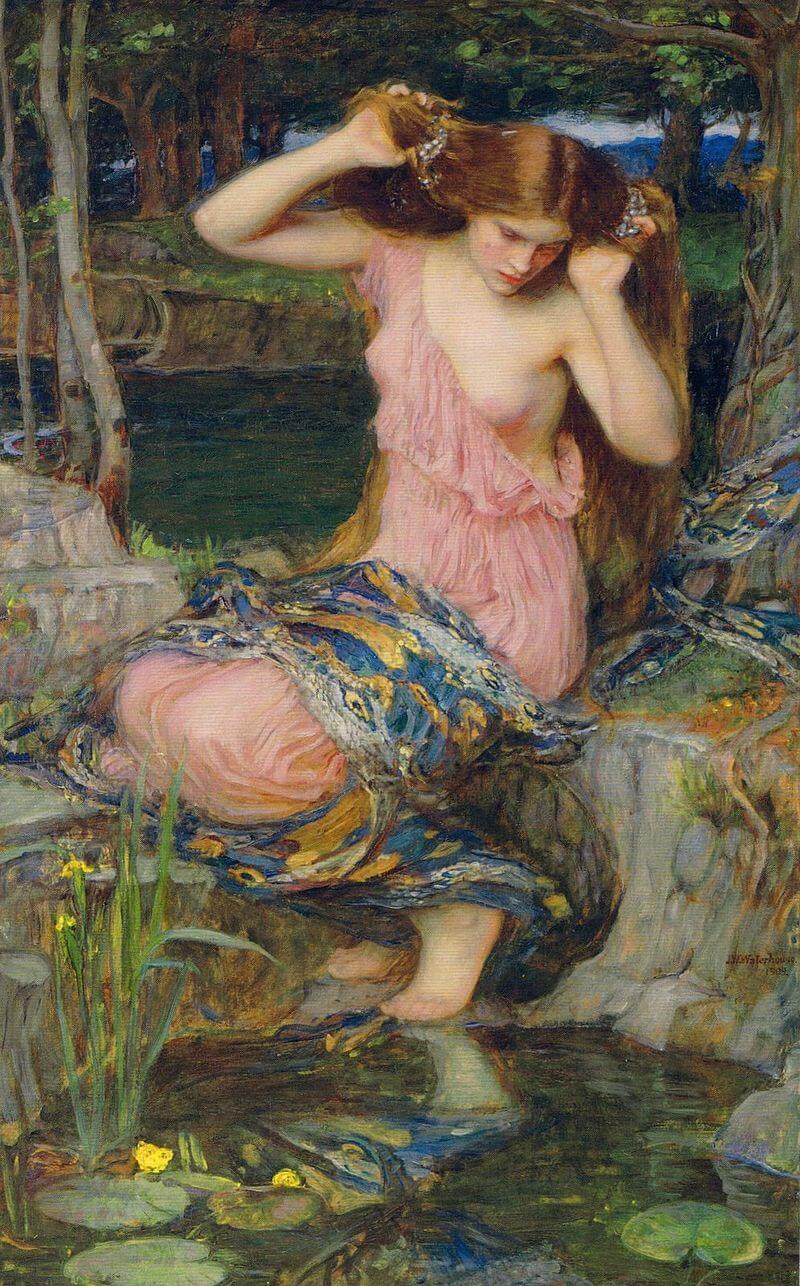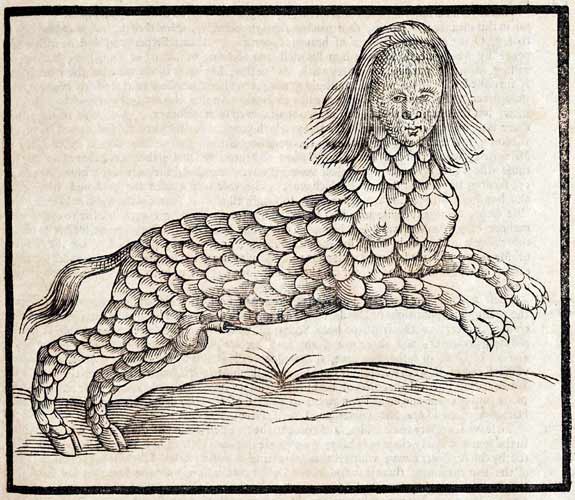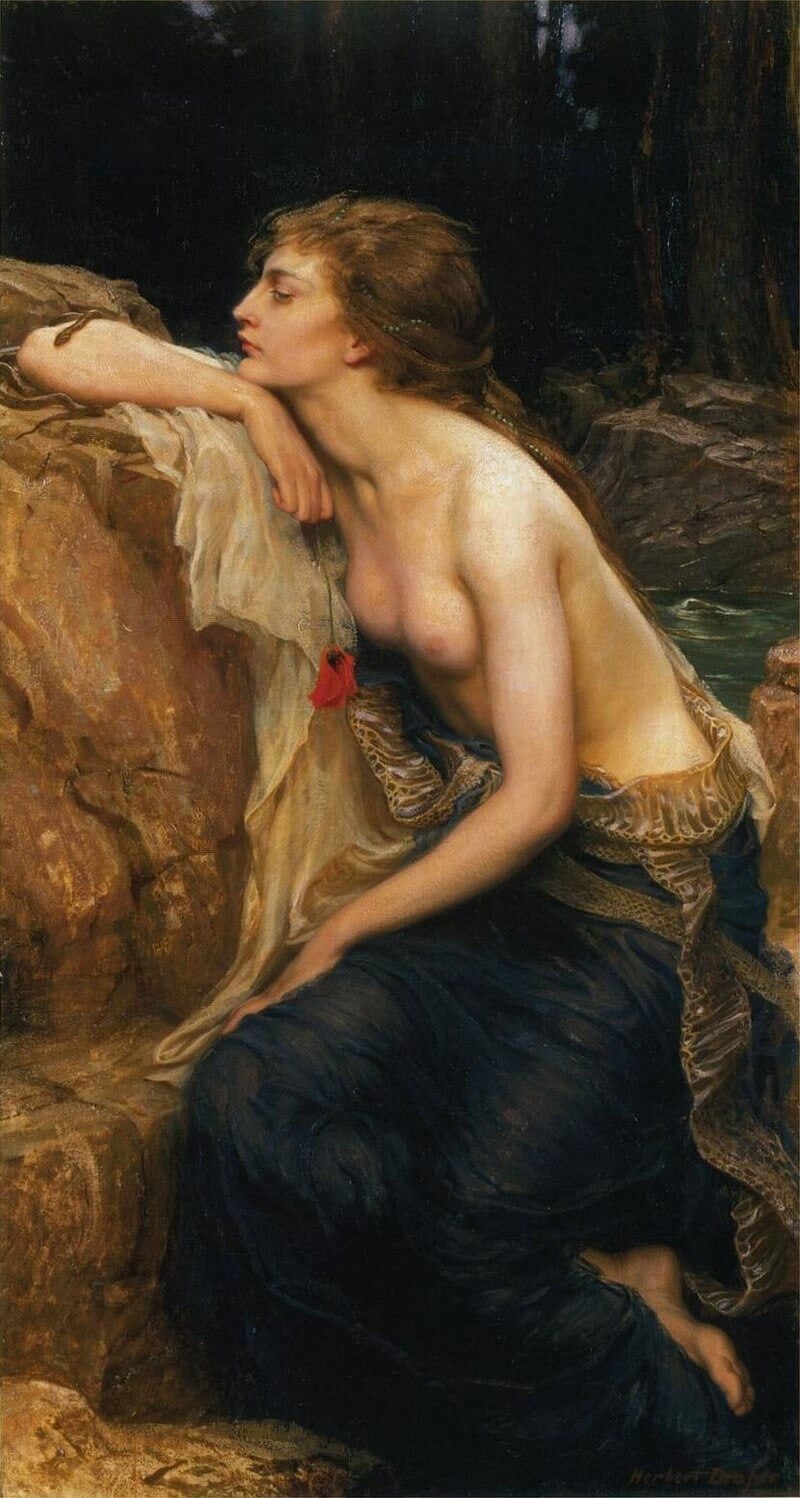
Table of Contents
In Greek mythology, Lamia was a horrific monster or daemon who killed every child she could get her hands on. The Ancient Greeks were terrified of her and would make their children wear talismans and amulets so that they could be protected from the child-devouring demon.
However, Lamia wasn’t always a monstrous creature. In fact, she was once a woman so beautiful that Zeus himself fell in love with her. Let’s explore Lamia’s tragic story and how she became the child-devouring night-haunting demon we know of today.
Who Was Lamia?

According to the myth, Lamia was originally a Libyan queen, known for her grace and stunning beauty. She was the daughter of Poseidon, the god of the sea. However, according to other accounts, her father was King Belus of Libya. No one knows exactly who Lamia’s mother was. Although her parentage was possibly divine, she was a mortal woman.
In some accounts, Lamia had two siblings – the twin brothers Aegyptus and Danaus. Aegyptus became the King of Arabia, was married (possibly to the Naiad Eurryroe) and became the father of fifty sons. Danaus took over the throne of Libya after his father Belus but he later became the king of Argos. He, too, had several daughters, who were collectively known as the Danaides or the Danaids.
Lamia herself had several children by Zeus, Poseidon and Apollo but most of her children were either doomed to die or cursed for all eternity.
Lamia’s Children
The most popular version of Lamia’s story tells of how Zeus, the god of thunder, saw how beautiful she was and fell in love with her (regardless of the fact that he already had a wife). He had an affair with Lamia and together the duo had several children. Most of the children were killed by Hera in their infancy. Three survived into adulthood. These children were:
- Acheilus – Lamia’s son was one of the most beautiful mortal men in the world when he grew up, but he was conceited and thought so highly of his looks that he challenged the goddess of love Aphrodite to a contest. His hubris angered Aphrodite to such an extent that instead of taking part in the contest, she transformed Acheilus into an ugly demon that looked like a shark.
- Herophile – She was another of Lamia’s daughters and was said to be the only one who escaped death or a monstrous future. She became the first Sibyl of Delphi.
- Scylla – This is disputed however. Although some sources mention that Scylla was the daughter of Lamia, she was also often mentioned as a daughter of the sea-good Phorcys and his wife Ceto.
Hera’s Revenge
Zeus was married to Hera, the goddess of family and marriage, but he had numerous extramarital affairs which his wife knew of. Hera was always jealous of Zeus’ lovers and the children he had by them. She always tried to harm them in any way she could. When she discovered the truth about Lamia and Zeus, she was enraged and decided to punish the queen by stealing away her children.
In some accounts, Hera took her revenge by killing all of Lamia’s children whereas in others she made Lamia kill them herself. She also cursed the queen with permanent insomnia so that she could never sleep. Lamia could never close her eyes so that she would always see the images of her dead children before them.
It was said that Zeus took pity on the beautiful Lamia and gave her the gift of prophecy as well as the ability to shapeshift and remove her eyes when she needed to take a rest.
The Transformation of Lamia
Lamia continued to be harrassed by Hera. Every time she gave birth to one of Zeus’ children, Hera either killed it or made Lamia kill it herself and devour it. After some time passed, Lamia lost her sanity and began to steal others’ babies and eat them as a way of drowning her sorrow. Hunting and stalking the children became part of the fun and it began to delight her.
However, Lamia’s evil actions soon started to cause her facial features to become distorted. All her beauty began to disappear and she looked like a demon. The once beautiful and kind Libyan queen was a now frightening and grotesque monster and people were terrified of her.
Depictions of Lamia
Some say that Lamia developed serpentine qualities and features. She became a part-woman, part-snake beast with the upper body of a woman and the lower body of a serpent like Echidna. It’s possible that these changes took place because of her savage actions but according to certain accounts, Lamia was cursed with these physical features by Hera.
Lamia as a Monster

Lamia quickly became a way for mothers and nannies to frighten little children into good behavior. In this regard, Lamia is similar to the bogeyman. However, to think of Lamia only has a monster is to do her a great injustice.
Like Medusa, Lamia suffered great torment and horrible torture simply because she was beautiful enough to attract the eye of a powerful man, in this case Zeus. While Zeus suffered no consequence, Lamia and her children paid for his lust. Eventually, even society shunned Lamia, seeing her as nothing more than a monster.
Lamia as a Symbol
Lamia is a symbol of jealousy, seduction and destruction. She symbolizes something that appears attractive but is, in fact, destructive. Even her appearance symbolizes this notion – as a half woman, half snake, Lamia is both gorgeous and dangerous at the same time.
Lamia in Literature and Arts

Lamia has been mentioned in numerous literary sources. One of the most famous works about her is Lamia by John Keats, which tells of a relationship between Lamia, an evil sorcerress, and a young man called Lycius.
Lamia has also been depicted in beautiful paintings such as The Lamia by Herbert James Draper and the first and second versions of Lamia by John Wiliam Waterhouse are some of the most acclaimed works featuring the Libyan queen.
In Brief
The fact that Zeus had many mistresses and that his wife delighted in causing them pain is one of the classic themes of Greek mythology. Unfortunately for Lamia, Hera meted out a punishment that was far worse than that suffered by any other mistress of Zeus.
Since her punishment was for all eternity, it’s said that Lamia still continues to exist, lurking in the shadows at night with her eyes on little children, waiting for the right moment to snatch them away.








